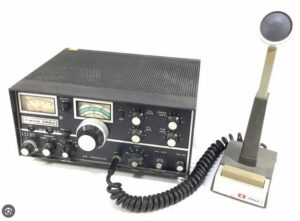Introduction
In the world of amateur radio, also known as ham radio, enthusiasts have witnessed a remarkable evolution over the years. From the early days of Morse code to the advanced communication systems available today, ham radio has truly come a long way. This article takes a closer look at how ham radio has changed and explores the new types of gear, or ham rigs, that are available in the market.
The Changing Face of Ham Radio
Ham radio has always been a hobby that brings people together, allowing them to connect with individuals from all walks of life. In the past, the hobby relied heavily on Morse code, with operators using telegraph keys to communicate over long distances. However, with technological advancements, Morse code is no longer the primary mode of communication in the ham radio community.
Today, ham radio operators have access to a wide range of communication options. Voice communication, also known as phone mode, is one of the most popular ways to communicate over ham radio. This mode allows operators to have real-time conversations, just like using a regular telephone. Additionally, digital modes like PSK31 and FT8 have gained popularity, providing faster and more efficient ways to exchange messages.
Modern Gear for Ham Radio Enthusiasts
The availability of modern gear has revolutionized the ham radio experience. Gone are the days of bulky and complicated equipment. Ham radio enthusiasts now have access to compact, lightweight, and user-friendly rigs that offer advanced features and capabilities.
One notable advancement in ham radio gear is the integration of digital technology. Software-defined radios (SDRs) have become increasingly popular, allowing operators to use computer-based software to control their radios. This flexibility enables operators to experiment with different modes and settings, enhancing their overall ham radio experience. Additionally, advancements in antenna technology have made it possible to achieve better signal quality and range, further improving communication capabilities.
The Global Popularity of Ham Radio
Despite being an old hobby, ham radio continues to thrive and gain popularity worldwide. With millions of licensed operators across the globe, ham radio provides a unique platform for communication and community building.
One of the reasons for its enduring popularity is its ability to connect people in times of crisis. In emergency situations where traditional communication channels may fail, ham radio operators step in, providing a lifeline for affected communities. This vital role has earned ham radio operators a well-deserved reputation as reliable and indispensable during times of need.
Furthermore, ham radio offers a host of opportunities for learning and personal growth. Many enthusiasts see it as a way to develop technical skills, expand their knowledge of electronics, and explore the fascinating world of radio propagation. With the advent of internet connectivity, amateur radio operators can now connect with fellow enthusiasts from all corners of the globe, sharing experiences and insights.
Conclusion
Ham radio has undoubtedly come a long way since its inception. From the reliance on Morse code to the availability of modern gear and the global popularity of the hobby, ham radio continues to evolve and thrive. As technology continues to advance, it will be fascinating to see how ham radio adapts and continues to bring people together.

